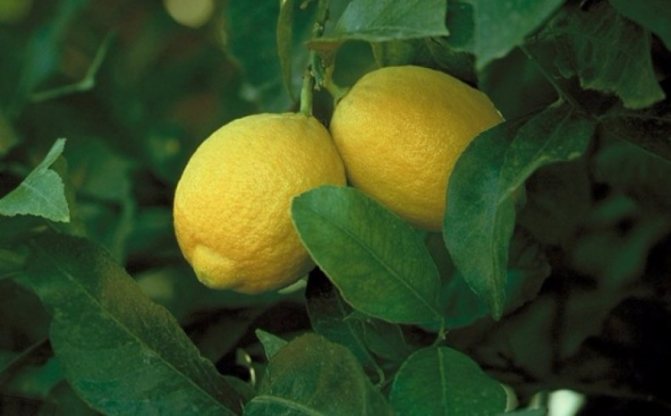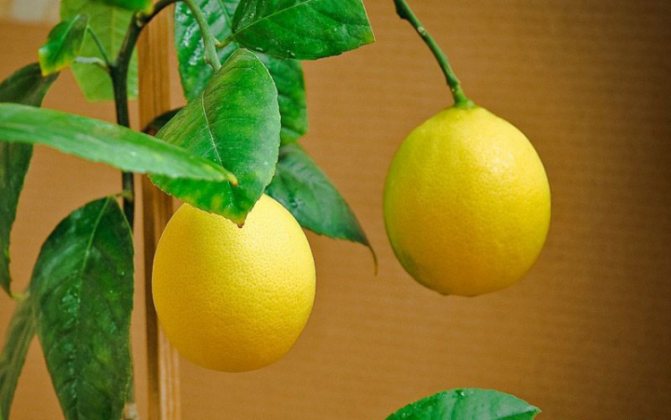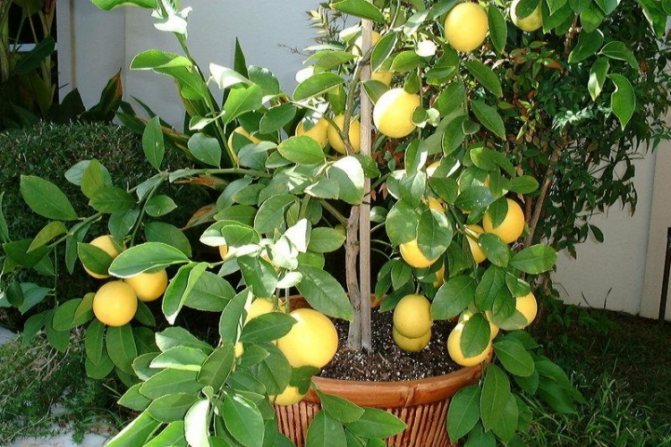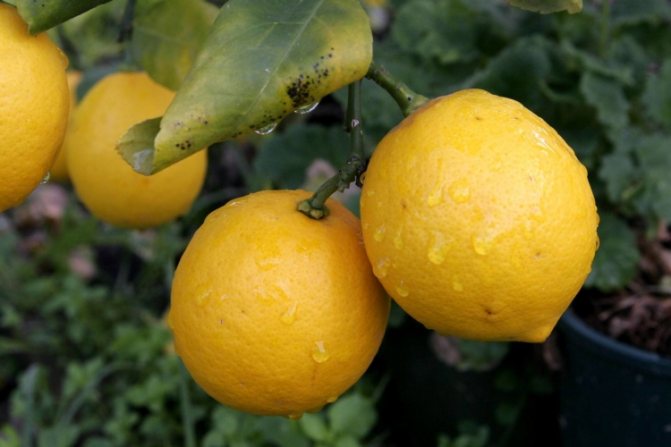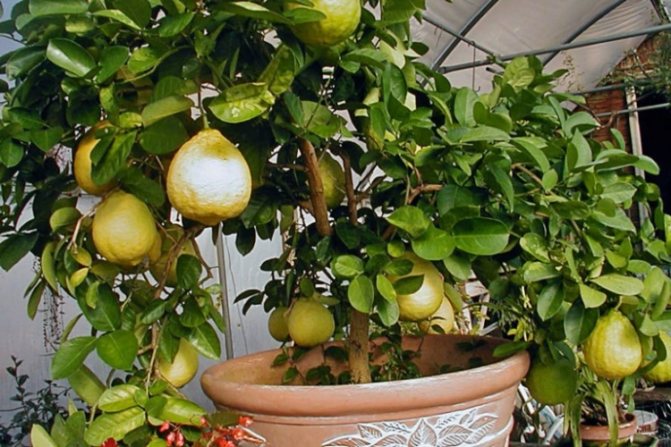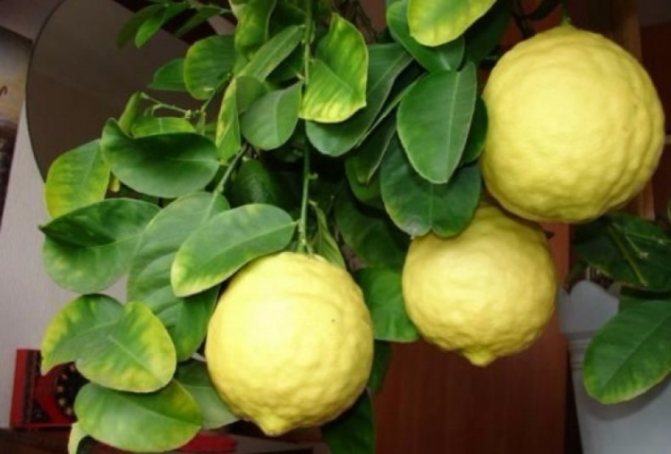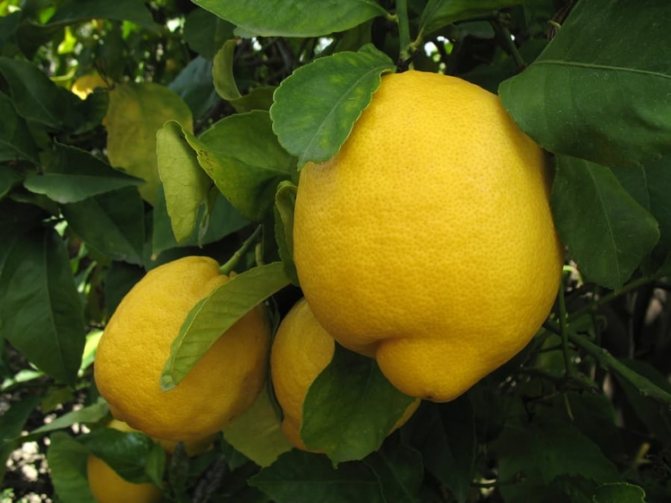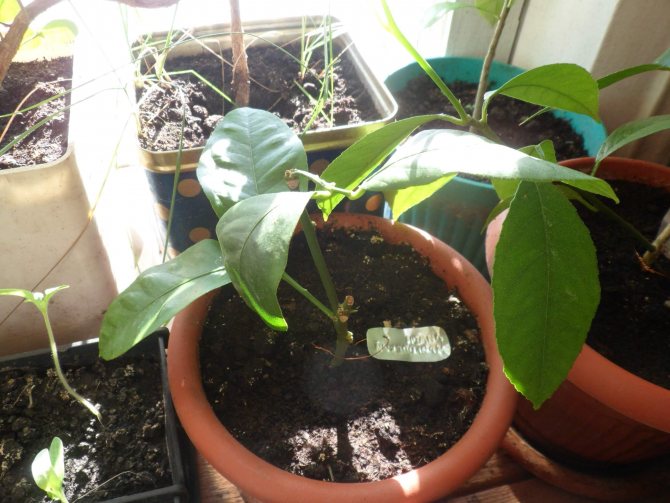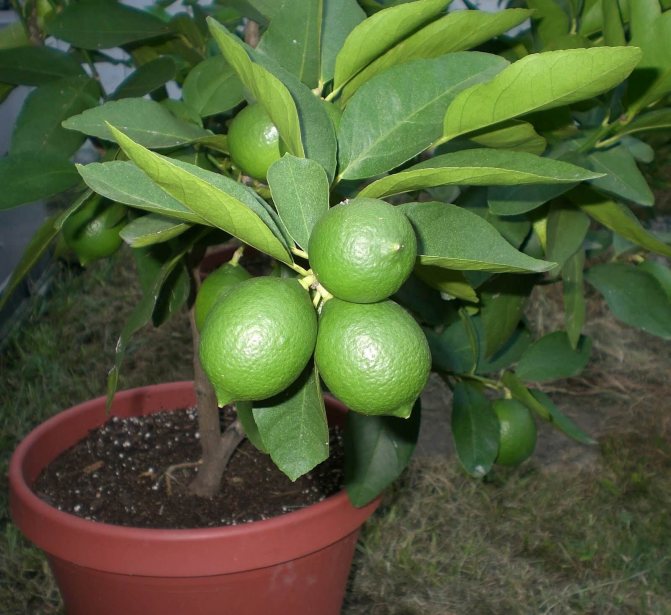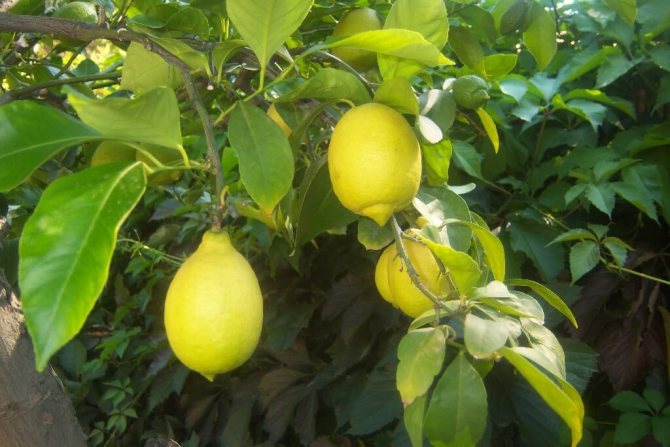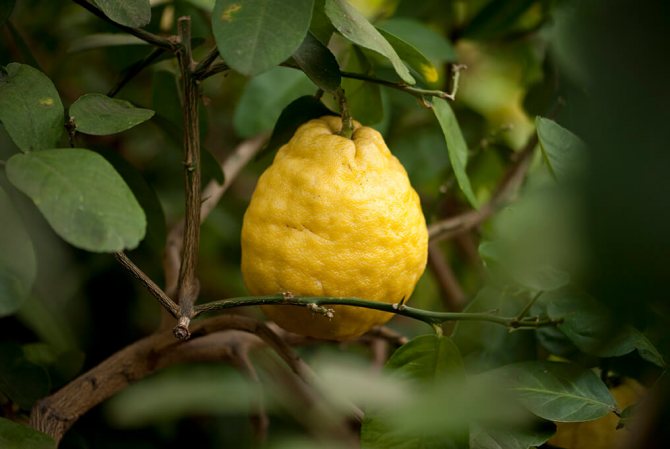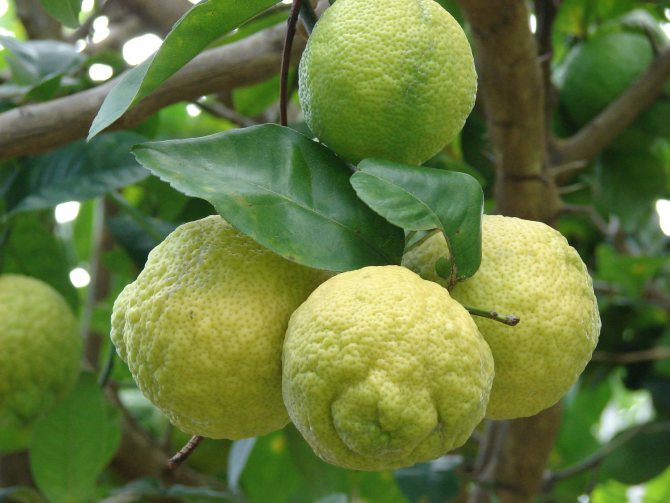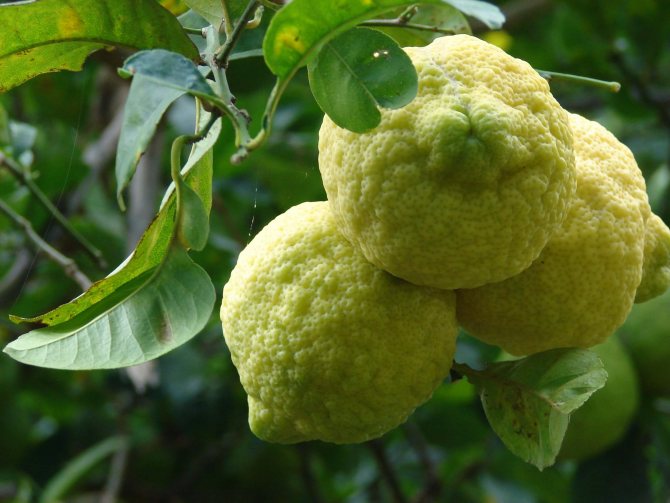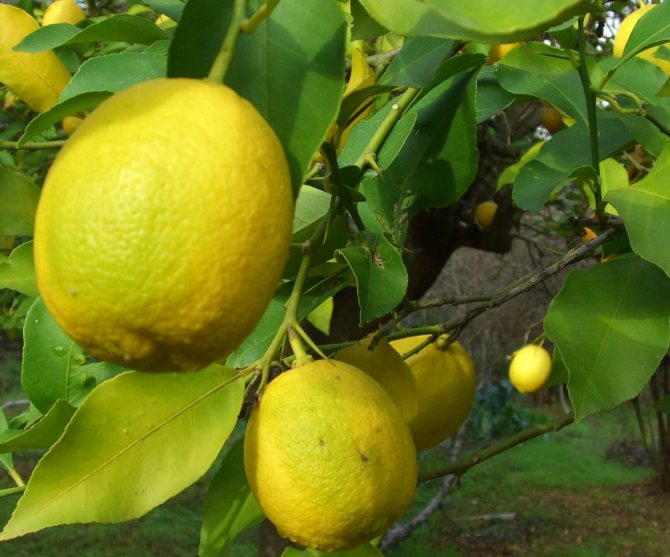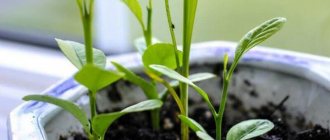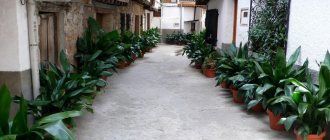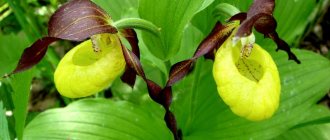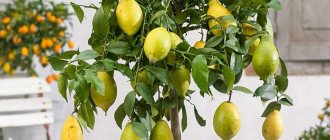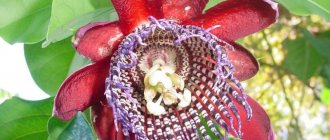In Soviet times, this lemon was the most common on the plantations of the Transcaucasus, especially in Georgia and Abkhazia. And this is not surprising, because his pedigree began on the lands of the Sukhum Experimental Station, which was engaged in a lot and fruitfully in the adaptation of various citrus fruits to the conditions of a temperate climate. The new lemon variety was bred under the guidance of the breeder N.M. Murri, this happened in the middle of the last century. Its first, original name is Novo-Afonsky.
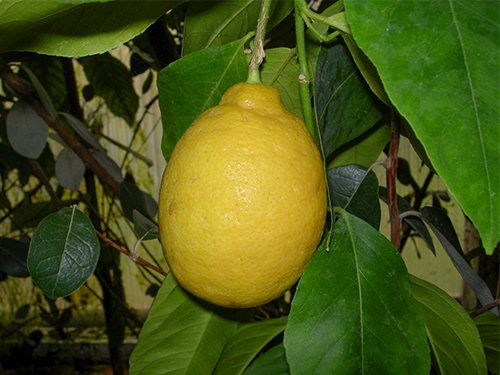
Choosing a homemade lemon variety
For growing at home, varieties with a small crown are chosen.
Popular varieties:
- Citrina - A neat crown with shiny leathery leaves. Grayish bark and juicy yellow fruits.
- Meyer's lemon is a hybrid of lemon and orange, a dwarf variety. It grows up to 60-90 cm. It bears the name of its creator. Differs in good fruiting. But, when compared with similar dwarf species, the fruit has a more sour taste. Does not take a break between flowering.
- Pavlovsky is a popular homemade lemon. With a round crown. It grows up to 1.5 m. The first fruits appear in 3-4 years. It reproduces successfully by cuttings. Blooming in the spring is very active.
- Volcano is a hybrid variety. Most likely a hybrid of kumquat and lemon. Decorative look and compact size. Produces bitter-sour fruits with a diameter of 4 cm.
- Lunario - the flowering period lasts constantly, so you can see ripe fruits, green ovaries, blossoming flowers and buds at the same time. It grows up to 0.8-1.5 m.
- Novogruzinsky homemade lemon ranks first in terms of the number of fruits and their taste. Indoors it reaches 1.5-2 m. There are a lot of thorns on the branches. The crown is spreading. The fruits are elongated, there are almost no seeds. The harvest is obtained for 4-5 years.
- New Zealand is similar to citron. It bears fruit with large and juicy lemons.
- Panderoza is also a dwarf, fruiting variety. Copes with high temperatures and normally perceives the lack of moisture in the air. The crop is usually small, although it blooms violently. Popular for its neat crown and flowering appearance. Propagated by cuttings that take root well.
- Tashkent is a medium-sized domestic tree with medium-sized leaves. Blooms in spring and autumn. Fruiting profusely, with small lemons. Loves a lot of light and humid air.
- Jubilee was bred by the method of scion of the Tashkentsky variety to the Novogruzinsky variety. It tolerates shade well, grows actively even with insufficient humidity. Height about 1.5 m. It blooms profusely and beautifully. Usually bears fruit for 2 years. The fruits are large.
- Citrofortunella reaches 1-1.5 m in height. Loves high humidity. It also grows in partial shade, although good lighting is recommended. Loves sunlight and moisture.
Summing up
Thus, Novogruzinsky lemon can be considered an excellent variety for home cultivation. Perhaps he has only two shortcomings: a large crown and late fruiting. But there are many advantages, including:
- Unpretentiousness, relative undemanding to lighting. - High decorative effect. - Excellent yield. - Excellent taste of the fruit. - Widespread: Cuttings can be found in many hobbyists and nurseries.
All this makes the variety a popular, well-known indoor citrus, the cultivation of which brings not only pleasure to admirers of exotic plants, but also undoubted practical benefits.
How to grow more crops?
Any gardener and summer resident is pleased to receive a large harvest with large fruits. Unfortunately, it is far from always possible to get the desired result.
Plants often lack nutrition and minerals.
In such cases, our readers recommend using - the innovative bio-fertilizer BioGrow.
It has the following properties:
- Allows you to increase yields by 50% in just a few weeks of application.
- You can get a good harvest even on low-fertile soils and in unfavorable climatic conditions
- Absolutely safe
Read more about it here >>
Beneficial features
Lemon tree - how lemon grows and blooms
Lemon is considered a source of valuable minerals and vitamins. Used in cooking. English lemon jam has a sour taste and a delicate texture.
Medicine cannot do without it. Essential lemon oil has antibacterial and wound healing properties. It is irreplaceable in the following cases:
- stopping bleeding;
- elimination of headaches;
- positive impact on the psyche;
- resolution of dermatological problems;
- elimination of toxins;
- cleansing the kidneys and liver;
- prevention of neoplasms;
- strengthening of blood vessels and heart;
- reducing excess weight;
- normalization of metabolism.
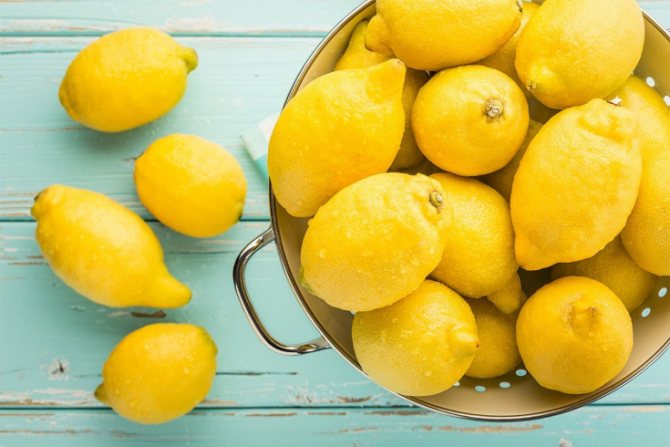

Lemon is very healthy
Traditional medicine notes the benefits of lemon for diarrhea and vomiting. In the treatment of snake bites, they did not do without lemon.
How to grow a lemon from a seed?
Growing technology:
- Buy some ripe lemons. Select the formed whole grain. For reliability, sow not one, but 3-4 grains from different fruits.
- Plant the seeds immediately after picking at a distance of 5 cm from each other and 3 cm from the edge of the pot, to a depth of 1 cm.
- The optimum temperature for seedlings is 18-22 degrees. Humidity is sufficient, but without excess.
- The first shoots appear after 2 weeks. Choose strong ones with the right shape. Cover with a jar to create a microclimate and grow in a bright place, avoiding direct sunlight. Remove the can for a short time once a day to refresh the air.
- After the leaves appear, plant the best shoots in separate pots, no more than 10 cm in diameter. There must be drainage.
- When the sprouts reach 15-20 cm, transplant into a permanent pot. It is important to take care of the drainage, which should be about 2 cm high.
- Suitable soil is a mixture of turf, deciduous soil and humus. Or a special ready-made lemon primer from the store.
The seed-grown lemon is quite strong and vigorous. Resistant to disease, quickly adapts to new conditions.
But a seed plant has different biological characteristics. The first fruits will appear in 10-15 years and the properties of the variety may be lost.
To harvest earlier, seed-grown lemon must be grafted. Then for 3 years it will begin to bear fruit.
Description and characteristics of the New Zealand variety
In the subtropics, lemon grows up to 4 meters in height, tolerates a drop in temperature to -5 ° C. The tree has a wide crown of dark green color. The edges of large oval leaves are sharpened at the end. The New Zealand variety was obtained by crossing 2 subtropical crops - lemon and citron.
All parts of the plant have a peculiar aroma. Elegant buds are replaced by flowers reaching 60 mm in diameter. Outside, they have a purple tint, white are painted on the inside. There are many large thorns on the leaves.
The fruits are different:
- oval shape;
- thick skin with tubercles;
- we present the nipple at the end;
- loose and juicy pulp.
An orange or yellow lemon weighs 600-700 grams, has a sour taste, weak aroma.
Indoor lemon pests and diseases
When growing homemade lemon, they take into account the characteristics of a particular variety in order to know how to protect it from pests or diseases. The reason may be infections, weakening of the plant's immunity, or some folk methods of fertilization.
Possible diseases and pests of lemon:
- The appearance of white flies indicates stagnation. Their larvae feed on roots and are very harmful to the plant. To combat them, various insecticides are used: irrigation solutions or aerosol forms.
- It is necessary to regularly examine the leaves - mites can settle there. Outwardly, they resemble small spiders, orange or brown in color. The damaged areas are tightened with a cobweb. It is necessary 3-4 times at intervals of several days to rinse the branches and leaves under the shower, with a strong pressure of water.
- Scabbards are motionless and tightly attached to the leaves. It is difficult to deal with them. Prepare a mixture of soap and kerosene in a ratio of 1: 0.5. Three times, with breaks a week, wipe the branches, leaves on both sides and the trunk, excluding the base.
- If an ash deposit appears on the leaves and branches, it is a sooty fungus. Leads to weakening and drying out of the plant. And also the growth of lemon slows down. To get rid of it, you need to thoroughly rinse the wood with a sponge under a warm shower. The room with the infected plant must be well ventilated.
- Another fungal disease is scab. It manifests itself in the form of putrefactive lesions on branches, leaves and fruits. If a disease is detected, all affected areas must be removed. Then treat the entire plant with a 5% Bordeaux mixture. Prevention of this disease is recommended. And in the spring, spray the lemon with a 2% solution of copper and iron sulfate.
- Wart. Wart-shaped growths on the leaves destroy greenery and crops. The methods of dealing with the scab are the same.
Contraindications
Lemon is contraindicated if:
- there is an individual intolerance to the body;
- children under 3 years of age;
- allergy;
- duodenal ulcer or stomach ulcer;
- gastritis;
- pancreatitis;
- liver dysfunction;
- breast-feeding.
Money Tree - scientific name and where it grows
Attention! To avoid harm and preserve tooth enamel, lemon juice is drunk diluted through a straw. Rinsing the tongue and mouth will not hurt.
Problems of growing lemon
| Change in appearance | The reason and what to do? |
| Lemon turns yellow | The reasons:
What to do: Requires high air humidity, top dressing and cool wintering. If it doesn't help, then transplant the lemon. |
| Leaves fall | Cause: On average, a leaf lives for 2-3 years and is replaced with aging. Most often, the leaves fall off in winter. This is most likely the consequences of an overflow. What to do: We need to transplant a lemon. Remove plant and soil from the pot. Allow the root system to dry out a little and transplant into barely damp soil. Do not overflow. |
| Lemon dries | Cause: The leaves turn yellowish brown. The reason is insufficient lighting. Or the humidity is too low. What to do: It is necessary to spray more often, water in moderation. You can add water to the root area. And spray the crown. And also feed regularly. |
If the lemon does not bear fruit, the reasons may be as follows:
- Lemon does not bear fruit without leaves. If, due to improper care, the plant has lost a lot of leaves, then next year it will not form fruits.
- Lemon does not bear fruit unless it blooms. Most likely, the pot is too small for him. The plant should be transplanted and fertilized.
Indoor plant description
Novice gardeners are interested in what a lemon is: a berry, a vegetable or a fruit.According to botanical characteristics, lemon is a plant that belongs to the Rutov family, the Citrus genus, the Pomerantsev subfamily.
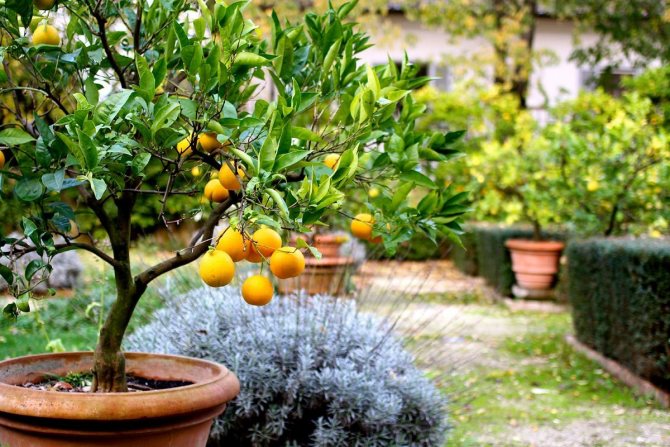

Lemon tree - home and garden decoration
Breeding Pomerantsev occurs if different varieties are crossed with citron. Citrus fruits differ in size, however, in terms of morphological properties, they belong to berries that have undergone changes in the process of varietal breeding. Lemon is the name of the hybrid fruit of this culture.
The homeland of the lemon plant is considered to be China and India, as well as the tropical islands of the Pacific Ocean. In the wild, lemon does not grow - the hybrid formed spontaneously and developed as a special species. The subtropical climate is the main condition for successful growth.
Additional Information. Lemon appeared in Russia in the 17th century. Dutch merchants brought saplings of lemon trees to the court of the Russian emperor. The caretaker of lemons took care of the useful and valuable culture.
In the CIS countries, lemon is grown in the Central Asian territories and the Caucasus (especially the Azerbaijani regions, where cultivates a plant in a creeping culture).
Lemon trees are evergreens. With the arrival of winter, they do not shed their foliage, which is a storage and accumulator of nutrients. Plants spend reserves on the development of branches, shoots, fruiting.
Lemon leaves are large, leathery, rich green. They live for 2-3 years, they fall off gradually. A sharp drop of foliage speaks of diseases, the need for feeding. Loss of leaves adversely affects fruit formation.
Flowering falls in March-April. Bud formation occurs on young stems of this year. Spectacular citrus flowers have a fragrant scent. Their arrangement (singly or in inflorescences of 3-5 pcs.) Is determined by the variety.


Lemon loves grooming
Fruit size and color depend on the variety: from orange-yellow to light yellow. Fruits ripen within 8-9 months.
Lemon is a remontant culture, characterized by the simultaneous development of fruits and flowering.
Good illumination and warm humid air are preferable for culture. The tree does not tolerate when there is no moisture and lack of air in the compacted soil. Temperature readings of +50 ° C and -7 ° C are dangerous for the lemon and lead to its death.
Reproduction of lemon at home
Homemade lemon is propagated by cuttings. With this type of reproduction, a 100% copy of the parent's genetic data occurs. Cuttings are called branches that have reached 4-5 mm in thickness and about 10 cm in length.
How to propagate lemon:
- First, the cutting itself is cut. It should have 3-4 formed buds and 2-3 leaves.
- Treat it with a root growth stimulant.
- Then half-dip in water for 3 days.
- For rooting, a mixture of humus, coarse sand and flower soil is used.
- After 3 days, dig in the cutting to a depth of 3 cm.At this stage, it needs to be sprayed, since without roots it will not receive moisture otherwise.
- Suitable temperature is 20-25 degrees.
- It finally takes root in 30-45 days. After transplant.
And also the cutting is grafted on a tree that has grown from a stone. The stock is a tree grown from a stone. A graft is a branch cut from an adult fruit-bearing tree.
It is advisable to cut the stalk before the procedure itself. The best time to scion is from April to August. During this period, the active movement of the juice in the trunk, this has a beneficial effect on the procedure. High humidity also contributes to the success of the scion.
Origin
Many sources point to the American ancestry of this citrus, and this is justified, but only partially. The name itself tells us that something is wrong here: America, and suddenly Lisbon (Lisbon)?
The fact is that, like almost all varieties of citrus fruits, this variety came to the American continent from Europe. More precisely, from Portugal.The lemon was shipped in the port of Lisbon, and in those days it was customary to call the plants by the name where they came from.
The historic move took place, presumably in 1824. At home, in Portugal, this citrus was called ‘Gallego’. But Americans love to change everything in their own way, so California breeders called the guest from Europe Lisbon. In any case, it was included in the Massachusetts catalog in 1843 under this name.
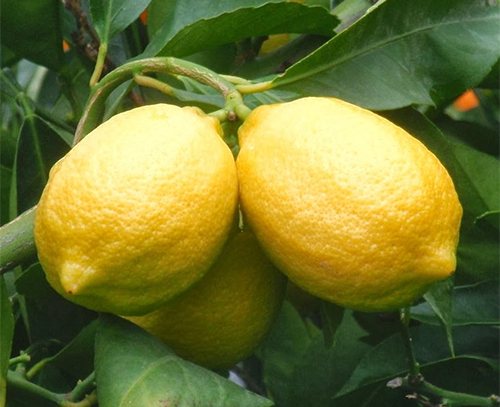

The Americans really did a lot of work on the Portuguese variety. In particular, several clones of it were created, very widespread in the world, for example, 'Frost' and 'Monroe Lisbon'.
Interesting! Not every climate turned out to be “to the liking” of this tree. So, it turned out that in India, its yield is significantly reduced, and life expectancy is reduced.
Achievements of breeders or a little about hybrids
Lemons are constantly undergoing selective breeding improvements. They are crossed with other citrus fruits to improve their appearance and taste. Here is some of them:
- Rosso - a hybrid of lemon with citron, has a yellow peel with red shades and strongly colored flesh.
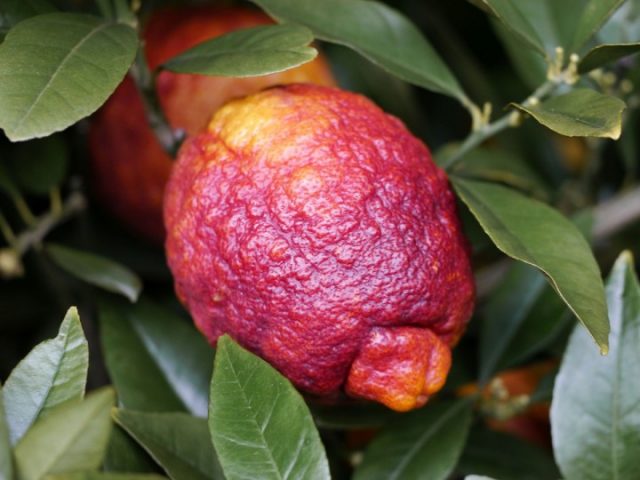

- Bizzaro is a high-yielding variety, on a thick, bright yellow thick peel of tear-shaped fruits there are relief longitudinal outgrowths.
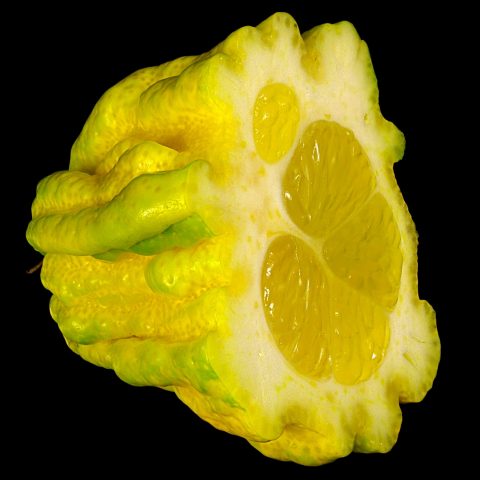

- Borneo - outwardly does not stand out from other varieties of lemons, is notable for strong aromatic properties that appear even when you touch the plant.


- Eureka variegated - at the beginning of ripening, the fruits are striped, at the end the skin turns pink. The pulp is also pink.


- Arcobal is a hybrid of Meyer's lemon and blood orange. At full maturity, the peel turns orange with bright red stripes. The pulp is sweet and sour, with the taste and aroma of orange.


- Sanguineum - forms large fruits with reddish flesh. At the beginning of ripening, the peel is amber-green with stripes, later it becomes yellow-coral in color.
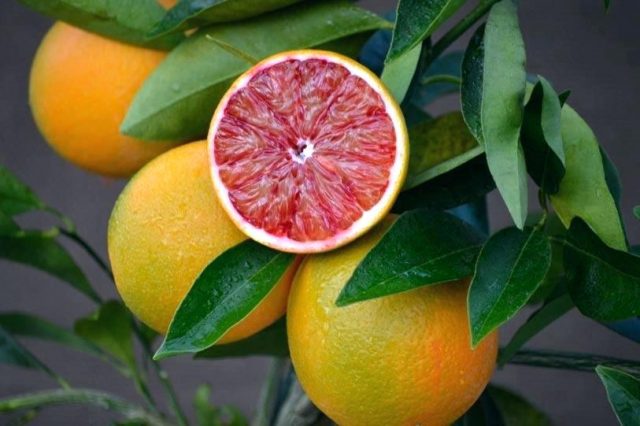

- Buddha's hand is a decorative inedible citrus with dry, bitter pulp. The fruit resembles a hand and exudes a delicate violet scent.
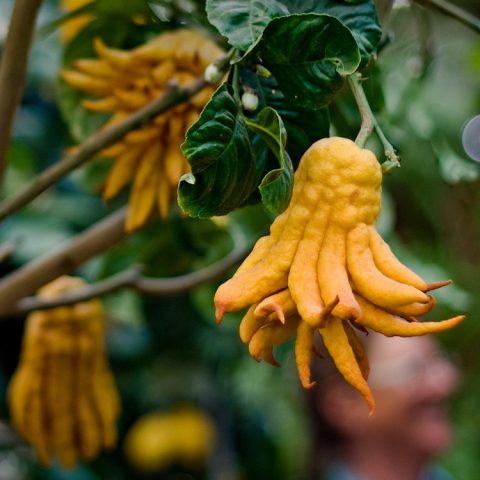

- Limandarine is a mixture of lemon and tangerine. Covered with orange skin, has a sour taste.


- Lemonadzhi - a hybrid of orange and lemon, has an oval-elongated shape, orange peel and lemon sour taste.
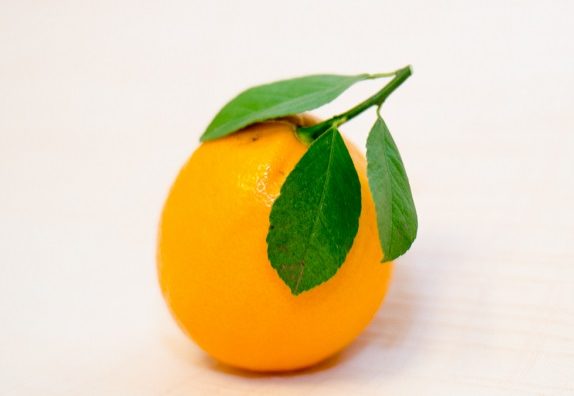

Citrus fruits perfectly interbreed with each other, the resulting fruits surprise with their appearance, unusual taste or strong aroma.
Villafranca
It has a pyramidal shape and powerful branches. Thorns can be seen only on young shoots. The plant is medium-sized, rarely reaches a height of 1.5 meters. The leaves are small, but there are a lot of them on the branches. It blooms with single small flowers or small inflorescences.
Fruits are small in size, round or oval in shape with a pleasant yellow color. Lemons have a smooth surface and reach a mass of no more than 100 g.
The pulp is aromatic and sour. For Russia, this variety is rare, it can be purchased only on order and grown with your own hands from seeds.
The record The best lemons for growing at home first appeared by SeloMoe.
Lisbon
The most vigorous tree among all varieties of indoor lemons. Gardeners love him no less than others for the yield and beauty of the crown. Lisbon has many large spines that cover the trunk and young shoots. The leaves densely cover all the branches of the tree, have an elongated oblong shape, fleshy. It needs good lighting, so it is necessary to additionally illuminate the tree in winter with fluorescent lamps.
In the second year after rooting, 30–40 fruits are harvested. Fruiting increases after a few years. The crop is harvested 2 times a year: in the middle of winter and at the end of spring. The fruits are oval and bright yellow in color. The skin is thick, covered with deep pores. The pulp is juicy and sour, pitted.
One of the features of Lisbon is the placement of fruits inside the crown, which protects them from the negative effects of various factors.
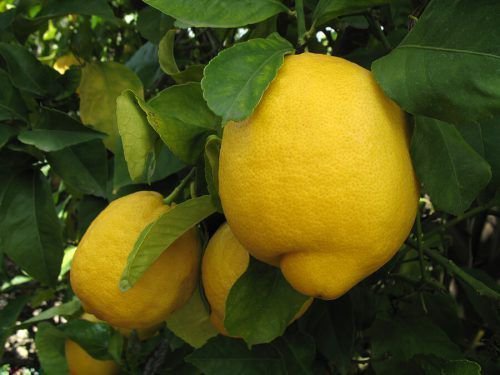

Lemon Lisbon is a very productive variety
New Zealand
Scientists have not been able to clearly identify the ancestors of the variety, since it is similar to many citruses. Closest to citron: the plant has spines and narrow winged leaves, large flowers.
Fruits are medium in size and ovoid. Fruit nipple is wide and elongated. The skin is thick and bumpy, ranging from yellow to orange in color. The pulp of the fruit is juicy and very sour, and is loose in structure. There are few seeds in the fruit, rarely more than four seeds per fruit.


New Zealand lemon produces large fruits with few seeds.
Kiev large-fruited
It is widely known for its high yield. It blooms and bears fruit all year round. The variety is unpretentious, easily adapts to indoor survival.
The beautiful crown is adorned with flowers and fruits all year round. If you form it correctly, you can increase the yield and affect the weight of the fruits: they often weigh about 1 kg. Thin peel and pleasant aroma, practically no seeds. The leaves are wide and large, there are no thorns.
Trees can be kept outdoors in summer and brought into the apartment in winter. Kiev large-fruited variety is suitable for greenhouse cultivation in the open field or in small tubs in a greenhouse.


Kiev large-fruited gives lemons up to 1 kg in weight
Buddha's hand
If you wanted to know which lemon is the most original, then this is without a doubt the Hand of Buddha. Such indoor lemon is usually obtained for its decorative qualities. Most of all attention is attracted by its fruits: long, up to 40 cm, in the form of a bunch of bananas or a hand (for which the variety got its name). They consist mainly of a thick peel up to 5 cm, the pulp is very little, it is not juicy, has a bitter or very sour taste and is not suitable for human consumption, but the zest is sometimes used for baking.


The leaves are oval and rather large. Home care requires plenty of light and warmth. Begins to bear fruit in the 3rd year. The fruits have a light violet scent. Sometimes this tree is used in perfumery.
Citrofortunella "Volcano" lemon
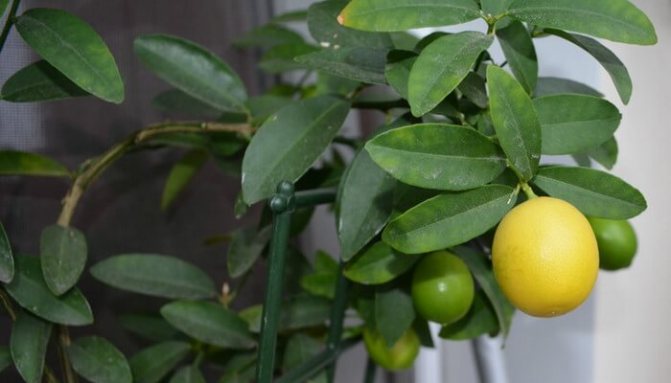

Citrofortunella "Volcano" lemon is a dwarf tree 1-1.2 m high. Fruits are small, about 4 cm long. The peel is thin, light yellow, bumpy. The pulp is juicy, tender, sour, and has a pleasant taste. Flowers and fruits appear all year round, often at the same time. The fruits keep on the branches for a long time.
When breeding this culture, it should be remembered that citrofortunella lemon does not tolerate calcareous soils, therefore it is recommended to irrigate with settled water.
Mezensky
It is used as an ornamental variety, since the fruits have an unpleasant bitter-sour taste. The trees are small in size, and if the crown is not formed in time, they have an untidy appearance. The crown grows strongly in width, but not in height.
The Mezen variety has wide leaves, dense in structure, reaching at least 20 cm in size. Inflorescences differ from Turkish varieties in bright purple color and a weak lemon odor. This variety differs from others by the presence of thorns on the trunk and branches.
Photo gallery
Characteristics of culture
Of all citrus fruits, lemon is the least demanding on temperature conditions. The most favorable growing temperature for him is up to 22. Prefers moist soil. Like all citrus fruits, he loves light, but he also has enough penumbra for active growth.
You can grow citrus in the following form:
- in the open field;
- creeping;
- trench;
- indoor.
The types of lemon crops are divided into two groups:
- tree-like - tall trees reach a height of 6 m, fruits are formed inside a dense crown;
- bushy - small bushes up to 4 m tall, fewer leaves, fruits ripen at the ends of branches.
Lemon cultivars in open ground in subtropical conditions are characterized by rapid growth and good yields. The most favorable conditions for growing stumbling lemon are the lands of Azerbaijan. Trench lemon varieties continue to be grown in Uzbekistan and Tajikistan.
In the climatic conditions of Russia, it will be possible to grow only indoor lemon. It is possible to grow this fruit at home in a winter garden or near a window in an apartment.
Health benefits and harms
During the period of rampant respiratory diseases, many turn to lemon for help, because it contains a lot of vitamin C, there is iron, phosphorus, magnesium, potassium. Lemon peel contains an essential oil that accelerates hair growth.
Lemon strengthens the immune system, removes free radicals, rejuvenates the body, breaks down cholesterol. Lemon is essential during the treatment of respiratory ailments.
Few people know, but 1 tsp. lemon juice on an empty stomach in the morning helps to remove stones from the gallbladder!
The content of potassium strengthens the heart muscle, calcium - bone tissue. Lemon helps to improve the functioning of the digestive system.


Delicious and healthy lemon juice
The benefits of lemon juice:
- improves skin, relieves acne
- strengthens the immune system
- has a diuretic property
- increases the body's resistance to diseases
- gives a boost of energy
But lemon fruits are not equally beneficial for all people. Eating lemons, you need to look at the acidity of the stomach.
back to menu ↑
See also: Eggplant: description and characteristics of 53 popular and unusual varieties for open ground and greenhouses + Reviews
Eureka
The lemon variety grown in California has good low temperature tolerance. The fruits are large, with thick skin, and have a pleasant taste. Used in cooking and making cocktails. Ribbing and slight roughness are often found on the surface of the peel. Fruits are light yellow in color with pinkish flesh.
It is easy to determine the type of lemon Eureka by the leaves and buds: the leaves are variegated, and the inflorescences are bright purple. Begins to bear fruit in the first year after planting. It rarely grows more than 2 m, which allows the plant to be grown even in small greenhouses or on a windowsill.


Lemon Eureka - Californian variety
Genoa
One of the rare species. Trees about a meter with a dense crown. There are almost no thorns. These lemons are distinguished by their particularly tasty fruits with delicate pulp. Their peel is edible, without bitterness.
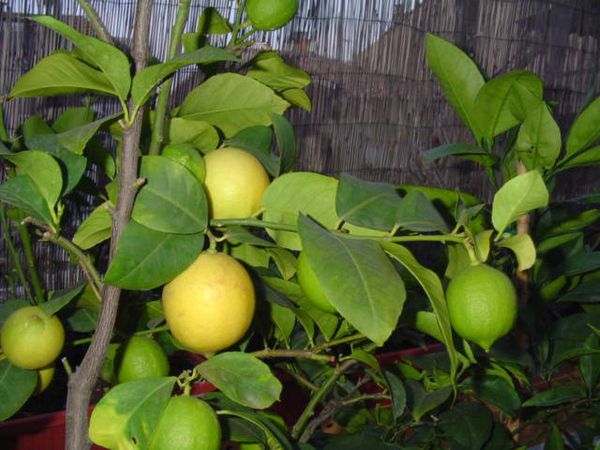

Rather dense films inside are characteristic. Weight reaches an average of 110 g. The lemon grown from the cuttings begins to bloom in the 4th year. One of the important conditions for care is an abundance of light, without which the tree does not develop well. With good home care, it gives a huge harvest: in the first years of fruiting, it bears up to 50 fruits, and from an adult tree they can be harvested in about 120-180 a year.
Photo gallery
Common varieties for indoor cultivation
For indoor floriculture, there are more than 150 varieties of lemon. All of them have their advantages and disadvantages, differ in the period of fruit ripening, remontant, weight and taste of lemons, and the presence of thorns.
Let's consider the most common:
back to menu ↑
See also: Date palm: features of growing from a stone at home, transplantation and care | (50 Photos) + Reviews
Lisbon
Maikop
The best varieties have been used for breeding this lemon. The result is an unusually fruitful crop: mature trees produce 100-300 fruits per year, and sometimes up to 700 are removed from old lemon trees of this variety! The fruits weigh about 140-160 g.
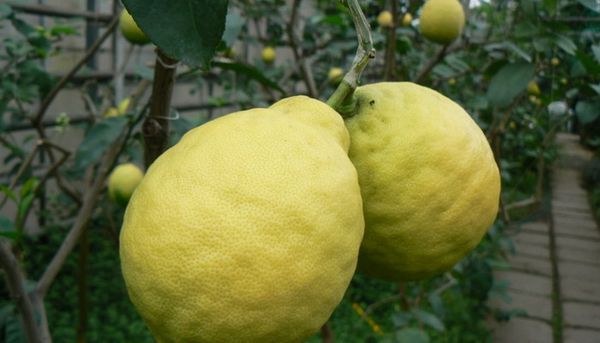

Trees rarely grow taller than 2 meters. They are hardy and unpretentious, home conditions are well suited for them. There are two subspecies. The first type is formed almost without stamping. The crown is dense, branched, with many branches without thorns, which are located horizontally or hang down slightly. Leaves with a waxy bloom, dark.Small flowers are collected in inflorescences of 3-5 pcs. It normally tolerates wintering in houses and ordinary indoor conditions.
The second variety is distinguished by strong, semi-vertical branches directed upwards. The crown is symmetrical. This type easily adapts to home conditions, but prefers wintering in a cool room.
Photo gallery
Ponderosa
Large hybrid form of lemon, obtained by crossing a lemon and a pomelo. Has characteristics characteristic of each culture. Due to the large size of the fruit, flower growers often confuse it with the Kiev large-fruited, but there are differences.
Ponderoza perfectly adapts to growth in apartments, tolerates drought and heat well. Soil oxidation immediately affects the condition of the leaves.
The main feature of the variety is the shape of the crown: it is bushy with powerful branches. Leaves are dense and hard, round, small.
Beige flowers with a pleasant aroma are collected both in inflorescences and singly on the tree trunk, therefore, bloom should be monitored so that single flowers do not interfere with the formation of leaves.
Ponderosa grows slowly, so fruiting begins only in the second year after the rooting of the cuttings. The harvest is small but stable.
The fruits are large, I can weigh 1.5 kg. The pulp of the fruit is tender, easily separated from the veins and membranes. The acidity of the pulp is practically absent, but there is a lot of vitamin C. There are many seeds, but the plant reproduces only by cuttings. The rind is dense and fleshy, like a pomelo, lumpy with a bitter aftertaste.
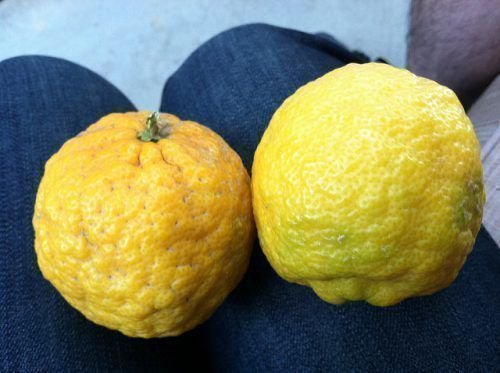

Ponderosa lemon produces very large and tasty fruits.
Photo gallery
Care features
Novogruzinsky lemon is a fruitful and unpretentious variety that is great for growing in a room. The lemon tree is very beautiful and will perfectly fit into any interior. If you properly care for the plant and keep it in optimal conditions, it will delight the owners with fragrant flowers and delicious fruits every year. It is important to provide the tree with proper home care. The following recommendations will help with this:
- Lemon is best placed by a window facing east or south. At noon, when the sun is at its zenith, the windows are sure to shade.
- For equilateral crown formation, the tub with the tree is turned every 7 days by 10 °.
- In winter, the plant is arranged to rest, reducing the intensity of watering, changing the lighting mode and temperature.
- If the plant does not need rest in winter, artificial lighting is provided for 6 hours a day.
The rules for caring for a New Georgian lemon differ little from the standard rules for caring for lemon trees. In order for the plant to grow and bear fruit regularly, you need to provide it with optimal watering. The room must also have the correct microclimate (temperature, humidity).


Novogruzinsky lemon has a very decorative look
Temperature regime
The temperature regime for lemon depends on the season and the phase of the plant's life cycle. Optimum temperature conditions:
- A young lemon (first three years of life) needs 17 ° C for leaf growth.
- During the flowering period, the air temperature should be 14-18 ° C. If the room is hot, the plant will shed flowers.
- The optimum temperature for fruit growth is 20–22 ° C.
- In winter, the room should be 13-15 ° C.
For the summer, the tub with a tree can be taken out on the balcony or in the garden. But it is important to ensure that the plant does not suffer from cold winds and temperature drops during the day and night. At night, the tub can be returned to the apartment or wrapped up. In winter, the growth of the plant slows down, it rests before a new flowering.
A decrease in temperature gives a signal that a period of rest has begun. In winter, do not put lemon next to heating appliances.
Watering lemon
Proper watering will ensure healthy growth of the root system, leaves, and fruit ripening. It is with water that the plant receives its nutrients. The watering regime depends on the season and the activity of plant growth:
- from late spring to early autumn, the tree is watered every day;
- from October to April, the plant is watered 1-2 times a week.
You need to water the lemon with a moderate amount of water so that the soil has time to dry out. Prolonged excessive moisture in the soil leads to the development of rot on the roots, damage to the leaves. Water the lemon with water at a temperature of 20-25 degrees. Spray the plant with water 2 times a week in summer and 2 times a month in winter. To avoid the development of mold processes, it is necessary not to water the leaves.


Watering the lemon should be done regularly.
Top dressing lemon
Lemon grows and develops rapidly, so the soil is often depleted. Young plants need less feeding than mature plants. In spring and summer, fertilizers are applied every 14–20 days. In winter, he does not need additional minerals. If lemon rest is not provided in winter, then it continues to be fertilized once every 30 days. Two hours before fertilization, the soil is watered.
The plant needs mineral and organic fertilizing. You can use a diluted infusion of manure. The composition of mineral fertilizers necessarily includes phosphate, potassium, magnesium, iron, calcium, copper.
The plant receives nitrogen from organic substances, it is also found in complex fertilizers. It is best to use mineral mixtures in liquid form.
If the green leaves of the Novogruzinsk lemon grow intensively, but it did not begin to bear fruit on time, you need to increase the amount of phosphorus in the dressing. Organic additives can be omitted during this period.


Liquid fertilizer is optimal for lemon
Lemon crown formation
To form the crown, the plant is pruned. If the plants are grown for decorative purposes, you can give the crown a neat, rounded shape. There are special requirements for a fruiting lemon. It must have a sufficient number of side shoots from the fruit wood. To form the crown of a fruit tree, pinching is carried out:
- The pinching of the zero shoot is carried out when it grows to 20–25 cm.
- The next pinching is carried out at a distance of 15–20 cm from the first. There should be 4 buds between the pinching, from which lateral branches will develop.
- First-order shoots should be pinched when they grow to 25–30 cm. After ripening, they are pruned 5 cm below the pinching point.
- The pinching of the shoots of the following orders (2–4) is carried out taking into account the fact that each next shoot should be 5 cm less than the previous one.
Fruit buds are formed on shoots of the third and fourth order. If you do not pinch, the branches will grow too long, the formation of fruit areas will slow down. Dry, limp or weak twigs should be regularly removed from the tree. They draw juices from the plant, preventing healthy shoots from developing.
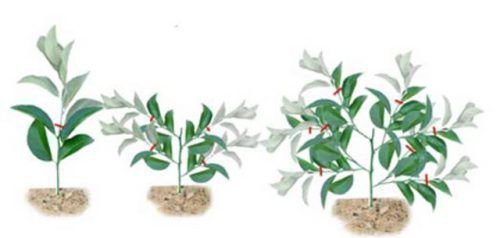

The scheme for the formation of indoor lemon
Recipes - Drink to Your Health!
It is clear that not everyone can drink pure lemon juice, and you shouldn't. If you make delicious lemon drinks, they taste better and can be drunk without grimacing.
back to menu ↑
See also: Bulgarian pepper for the winter: 3 ways to store a vitamin record holder and 5 most delicious recipes for preparations
Lemon juice with honey


Lemon drink with honey - a charge of vivacity and well-being!
- The washed lemon needs to be cut into slices.
- In a separate saucepan, boil water and pour over the sliced lemon.
- We add honey to the drink only after the juice itself has cooled to room temperature.
- You can add as much honey as you like. Be guided by your taste.
- After mixing, the drink should be infused.
Bon Appetit!
back to menu ↑
See also: [Instruction] Grafting of fruit trees in summer and spring: a description of the most popular species
Homemade lemonade
Both children and adults enjoy the soft drink. It is especially good in the heat - it perfectly quenches thirst! And during the period of vitamin deficiency, it raises the mood and strengthens the immune system.
back to menu ↑
Read also: Projects of country houses for 6-10 acres: 120 photos, description and requirements. The most interesting ideas
Classical


Classic taste
To make the above miracle drink, you need a very modest set of components:
- Two lemons
- Sprig of melissa
- Four tablespoons of sugar
- One and a half liters of water with gas
You will need the following tools at hand: fine grater, gauze, container
So, let's proceed directly to the preparation of the lemonade itself:
- In order for our lemonade to be healthy and environmentally friendly, you need to thoroughly rinse the raw materials. Next, using a grater, carefully peel the lemon from the top skin.
- We put the resulting zest in a jar and pour chopped lemon balm there, do not forget to add 500 - 550 ml of boiling water and granulated sugar.
- Shake well the contents of the jar. We wait a quarter of an hour, after which we pour in lemon juice and mineral water with gas.
- Thoroughly filter through several layers of gauze and send it to the refrigerator so that the drink becomes cold.
- That's all. Our lemonade is ready.
back to menu ↑
See also: Arugula: its benefits and harms to the health of men and women, cultivation, use in cooking, salad recipes + Reviews
Raspberry plus lemon


Lemon raspberry lemonade
If you decide to make a drink from lemons with raspberry flavor, then you will need the following components:
- A handful of raspberries (200 g)
- Highly carbonated mineral water 1.5 l.
- A couple of lemon balm leaves
- Two lemons
Manufacturing process:
- Citrus fruits must be thoroughly washed and dried. Cutting them in half, squeeze out all the juice
- The next step is to mix freshly squeezed raspberry juice with the juice of two lemons.
- Add highly carbonated mineral water to the juice mixture
- We decorate with raspberries, putting them on the bottom of the glasses
- Pour in a cold drink and decorate with lemon balm leaves
back to menu ↑
See also: Japanese camellia at home - a winter flower from Asia: description, varieties, cultivation and care, reproduction (100+ Photos & Videos) + Reviews
Non-alcoholic Lemon Mojito
The classic drink is a cocktail with lime juice as the base ingredient. Practice shows that lime can be replaced with its citrus counterpart - lemon. The taste will not be affected in any way by such a substitution.
In addition to lemon, stock up on:
- A few sprigs of peppermint
- Basil sprig
- Highly carbonated mineral water
- Ice cubes
- Natural honey (1 tablespoon)
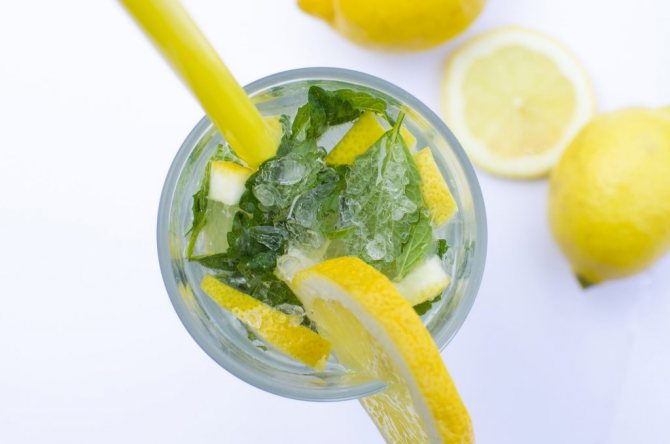

Lemon Mojito
- Mint and basil must be thoroughly ground to a green gruel in a mortar, add three tablespoons of water and strain the mixture
- Pour the juice squeezed from one lemon into a container for making lemonade
- Add the extract of mint and basil, ground in a mortar, honey
- Fill with highly carbonated mineral water, mix, wait for the honey to dissolve
- Falling asleep ice cubes
back to menu ↑
See also: TOP-35 Most unusual and amazing plants in the world | + Reviews
VIDEO: About the benefits of lemon juice for the human body
See also: Edible and inedible mushrooms, twin mushrooms. The most common 16 types with names and detailed descriptions + Reviews

